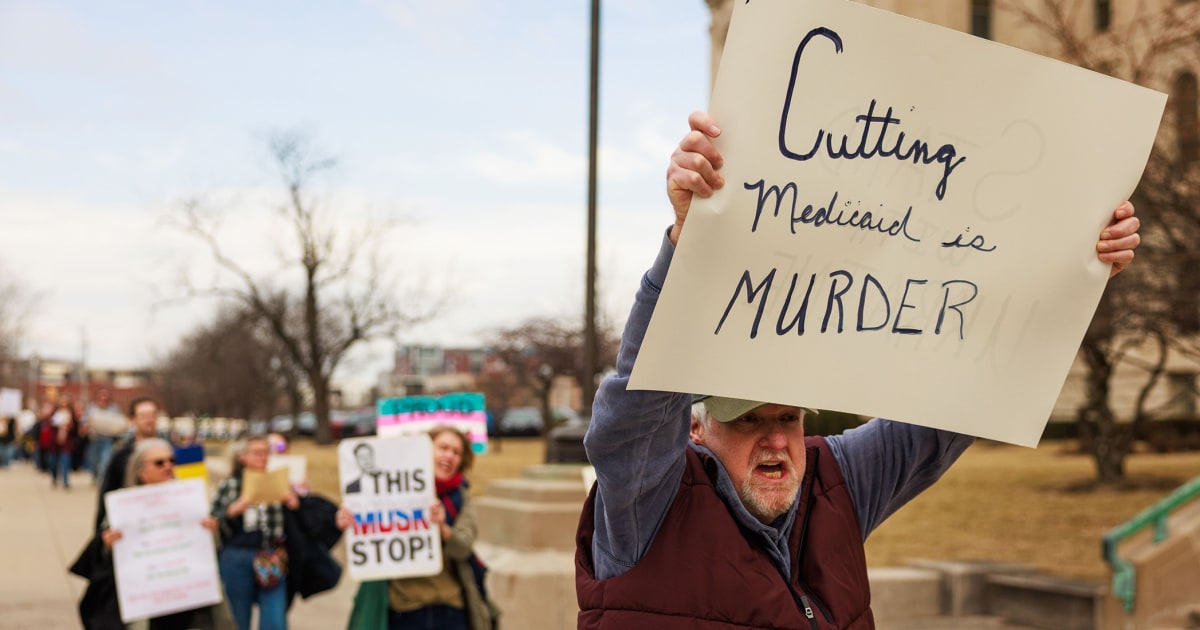Unraveling the Myths: Medicaid Cuts and the Misinformation Crisis on Social Media
As potential cuts to Medicaid surface, a wave of misinformation is sweeping through social media channels. This article dives into the impact of these false narratives and how they shape public perception and policy discussions.
The Landscape of Medicaid and Its Importance
Medicaid is a vital program that provides healthcare coverage to millions of low-income individuals and families in the United States. Established in 1965, it serves not only low-income adults but also children, pregnant women, elderly individuals, and people with disabilities. The program plays a critical role in ensuring access to essential health services, from routine check-ups and preventive care to emergency medical treatment.
As of 2023, Medicaid covers over 80 million Americans, making it one of the largest health insurance programs in the country. Given its extensive reach, any proposed cuts to Medicaid can have significant implications, not just for the recipients but for the healthcare system at large. However, recent discussions surrounding potential cuts have ignited a misinformation crisis on social media that threatens to distort public understanding of the program and its necessity.
The Rise of Misinformation on Social Media
In the digital age, information spreads rapidly, often outpacing the verification processes necessary for accuracy. Social media platforms, while invaluable for communication, have become breeding grounds for misinformation. The topic of Medicaid cuts is no exception. False narratives can emerge from misinterpretations, political agendas, or even well-meaning but misguided individuals sharing unverified information.
For instance, claims that Medicaid cuts will lead to the loss of coverage for millions without context can provoke undue panic. Such statements can overshadow the nuanced discussions surrounding budget allocations and the need for reforms within the system. Understanding the facts is crucial, but misinformation can skew perceptions and lead to misguided public outrage.
Common Myths Surrounding Medicaid Cuts
To better understand the impact of misinformation, it is essential to identify some of the common myths surrounding potential Medicaid cuts:
- Myth 1: Medicaid is Being Completely Eliminated – This is a common fear that circulates on social media. In reality, while discussions may revolve around budget cuts or changes in policy, the complete elimination of Medicaid is unlikely due to its critical role in providing healthcare.
- Myth 2: All States Will Face the Same Cuts – Medicaid is administered at the state level, which means that any potential cuts may vary significantly from one state to another. This nuance is often lost in oversimplified narratives.
- Myth 3: Cuts Will Only Affect Low-Income Adults – Many believe that cuts will impact only certain demographics. In truth, Medicaid serves a diverse population, including children and the elderly, so cuts could affect various groups.
- Myth 4: Medicaid Recipients Abuse the System – This stereotype perpetuates stigma against Medicaid recipients. Most beneficiaries rely on the program for essential health services, and the notion of widespread abuse is largely unfounded.
The Impact of Misinformation on Policy and Public Perception
Misinformation surrounding Medicaid cuts can skew public perception and influence policy discussions in dangerous ways. When the public is misinformed, it can lead to a lack of support for necessary reforms or protective measures. Lawmakers may feel pressure to respond to public outcry fueled by false information, leading to decisions that may not align with evidence-based practices or the needs of constituents.
Furthermore, misinformation can stoke fear and anxiety among Medicaid recipients. Individuals who rely on Medicaid for their health care may experience increased stress, impacting their overall well-being. Affected populations may hesitate to seek necessary medical care due to fears of losing coverage, leading to worse health outcomes.
Combating Misinformation: Strategies and Solutions
Addressing the misinformation crisis regarding Medicaid cuts requires a multifaceted approach. Here are some strategies that can help combat misinformation:
- Promoting Media Literacy: Educating the public on how to critically evaluate information sources can empower individuals to discern fact from fiction.
- Encouraging Open Dialogue: Forums for discussion among policymakers, healthcare providers, and the public can foster a better understanding of Medicaid’s complexities and the implications of potential cuts.
- Engaging Trusted Voices: Healthcare professionals and advocacy groups can play a pivotal role in disseminating accurate information and dispelling myths surrounding Medicaid.
- Utilizing Social Media Wisely: Platforms should take responsibility for moderating content to limit the spread of false information. Initiatives aimed at fact-checking can help counteract misleading claims.
The Role of Advocacy in Shaping the Future of Medicaid
Advocacy plays a crucial role in shaping public policy and protecting the integrity of essential programs like Medicaid. Organizations dedicated to health care advocacy work tirelessly to ensure that the voices of those affected by potential cuts are heard. Grassroots movements and campaigns can mobilize public support, urging lawmakers to consider the real impacts of proposed changes.
Moreover, advocacy efforts can also focus on educating the public about the importance of Medicaid, emphasizing how it benefits not only individuals but society as a whole. By highlighting stories of those who rely on Medicaid for critical health services, advocates can humanize the issue and foster empathy, countering the negative narratives often perpetuated by misinformation.
Conclusion: Navigating the Future of Medicaid with Informed Perspectives
The potential cuts to Medicaid have ignited an urgent need for accurate information amidst a sea of misinformation. As we navigate these complex discussions, it is essential to remain vigilant against false narratives that can shape public perception and policy decisions. By promoting media literacy, fostering open dialogue, and supporting advocacy efforts, we can work together to ensure that the truth about Medicaid is not drowned out by myths.
Ultimately, the future of Medicaid depends on our collective commitment to understanding its significance and advocating for the millions who rely on it. As we move forward, let’s prioritize facts over fear, compassion over stigma, and unity over division in the important discussions surrounding healthcare in America.
See more WebMD Network



